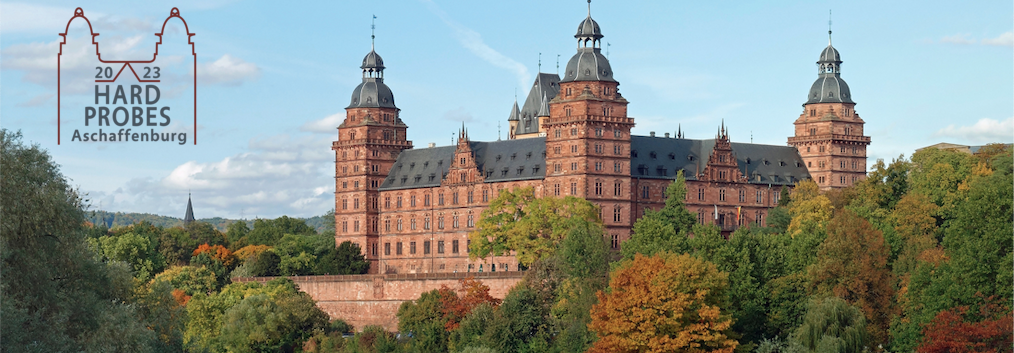Sprecher
Beschreibung
Heavy quarks (i.e. charm and beauty) are powerful tools to characterize the quark-gluon plasma (QGP) produced in heavy-ion collisions. Although they are initially produced out of kinetic equilibrium via hard partonic scattering processes, recent measurements of anisotropic flow of charmed hadrons [1] pose the question regarding the possible thermalization of heavy quarks in the medium. Our recent work [2] provides new insights on the level of thermalization of charm and bottom quarks in the QGP. In particular, exploiting a mapping between transport theory and fluid-dynamics, we will show how a fluid-dynamic description of the dynamics of charm quarks in the QCD plasma is feasible.
We will show results for spectra and flow coefficients of charmed hadrons obtained with a fluid-dynamic code (FluiduM [3]) coupled with the conservation of a heavy-quark - antiquark current in the QGP. We compare our calculations with the most recent experimental data in order to provide further constraints on the transport coefficients of the QGP [4].
This work is funded via the DFG ISOQUANT Collaborative Research Center (SFB 1225).
[1] PLB 813 (2021) 136054
[2] Phys.Rev.D 106 3, 034021 (2022)
[3] Phys. Rev. C 100, 014905 (2019)
[4] Capellino, Beraudo, Dubla, Floerchinger, Grossi, Kirchner, Masciocchi, Selyuzhenkov; in preparation
Affiliation
Physikalisches Institut Heidelberg, GSI Helmolzzentrum fuer Schwerionenforschung Darmstadt
| Experiment/Theory | Theory/Phenomenology |
|---|
